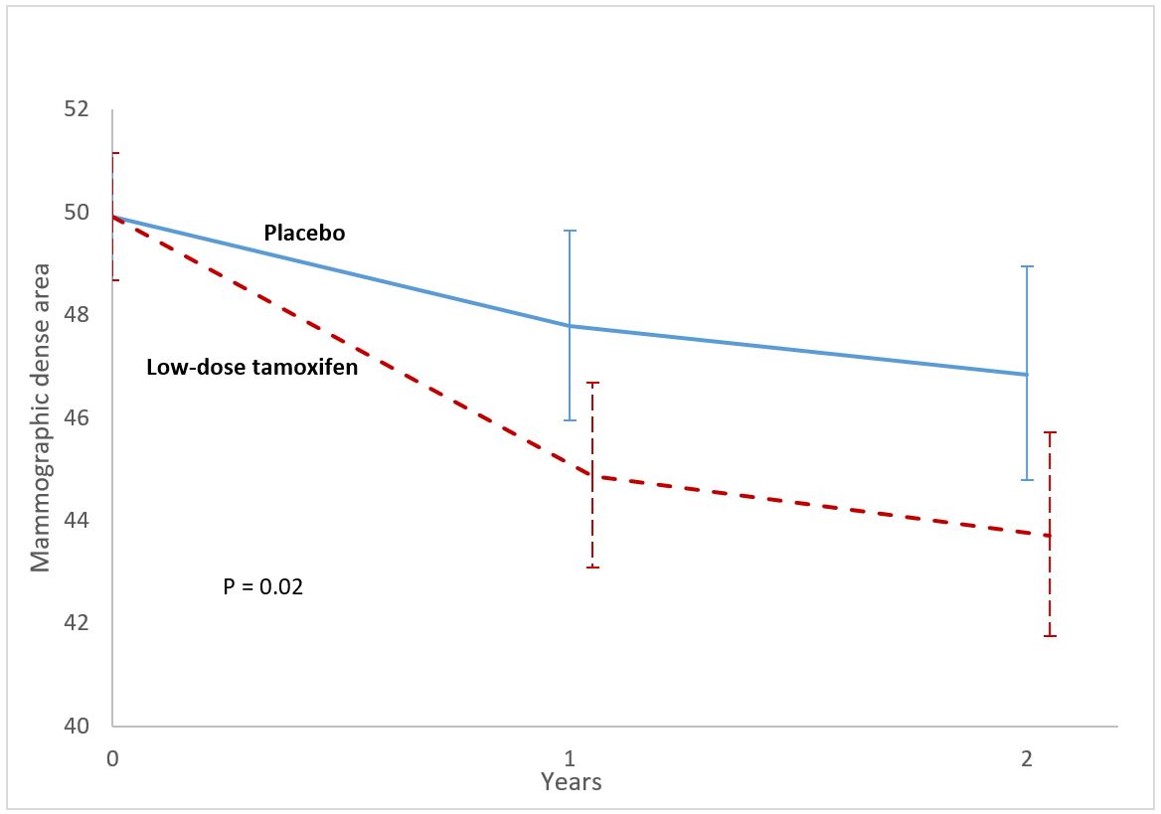Study Design
We conducted a multi-center, investigator-initiated, randomized phase IIb, double-blinded, placebo-controlled trial of tamoxifen 5mg/d vs. placebo administered for 2y (FDA IND 107367; NCT01196936). Women who were 25 years of age or older at enrollment, with a history of chest radiation at ≥12Gy at age 40 or younger for a primary cancer, and were off-therapy for at least 6 months, were eligible. Eligible participants were randomized 1:1 in a double-blinded fashion. Women received low-dose tamoxifen or placebo daily for 2 years. Mammographic dense area was the primary endpoint measured at baseline, and at 1 and 2 years after enrollment.
 Results
Results
We enrolled 72 evaluable participants (low-dose tamoxifen: n=34; placebo: n=38). Most patients (86%) carried a history of Hodgkin lymphoma. Median age at primary cancer diagnosis was 21.5 years, and at enrollment was 43.8 years. Median dose of chest radiation was 30.3Gy.
The mean mammographic dense area was lower among participants on the low-dose tamoxifen arm (Figure). This represented a 10.2% relative reduction over the two years in the low-dose tamoxifen arm and 4.4% in the placebo arm.
We did not find a statistically significant difference in AEs between study arms. None of the AEs was attributable to low-dose tamoxifen. There was no difference in the prevalence of patient-reported symptoms between the treatment groups, with the exception of a higher prevalence of myalgias and fatigue. Median adherence rates over 2y were comparable (low-dose tamoxifen: 97.5% vs. placebo: 96.7%, P=0.9).
Conclusions and Future Directions
In this first chemoprevention trial for young chest-irradiated cancer survivors, we provide evidence that 2 years of low-dose tamoxifen significantly reduces mammographic dense area, and that the drug dosing of 5mg/d is safe and well tolerated. Radiation-related breast cancer is the most prevalent second cancer in survivors of adolescents and young adult cancer; low-dose tamoxifen could serve as an attractive option because of ease of administration, low cost and a favorable safety profile, good tolerability and high adherence.